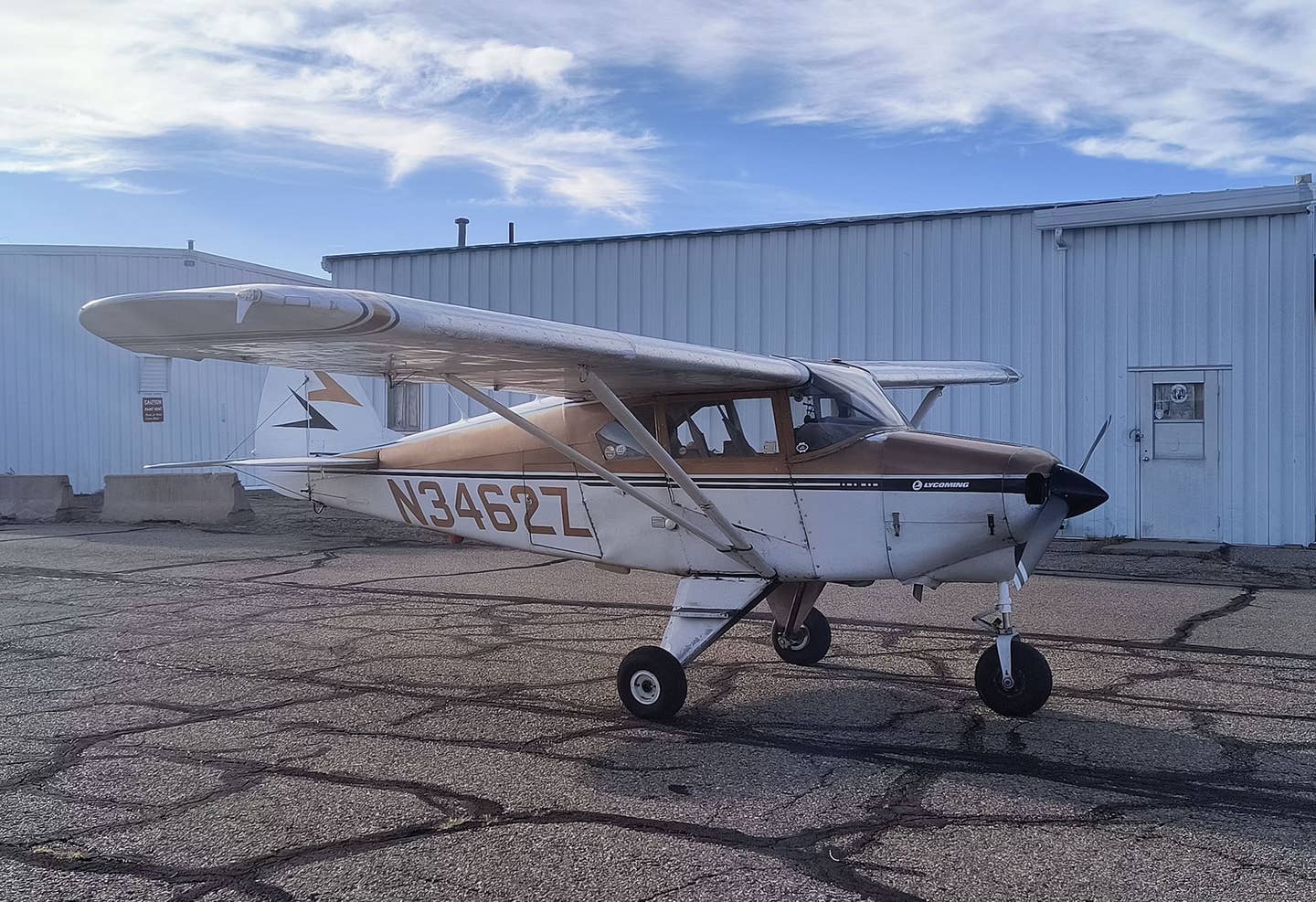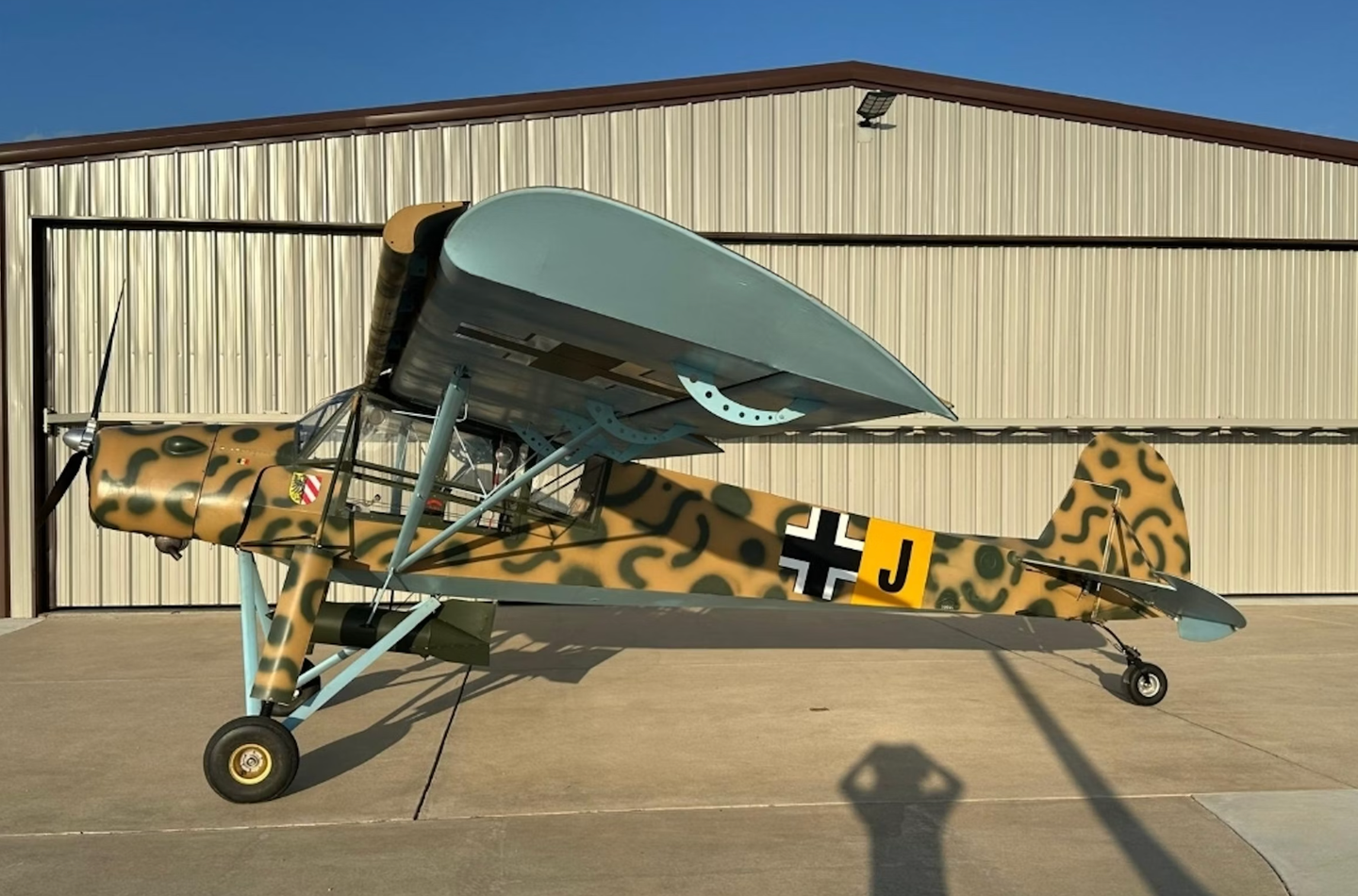Bargain Buys on AircraftForSale: 1960 Piper PA-22-160 Tri-Pacer
Derived from the PA-20 Pacer taildragger, the PA-22 Tri-Pacer first flew in 1950 and is simply a tricycle-gear version of its tailwheel relative.

1960 Piper PA-22-160 Tri-Pacer [Courtesy: DeWayne Colombe]
Underappreciated type offers the next owner a lot of machine for the money.
In the post-pandemic era, buyers of all aircraft types are united in one viewpoint—airplanes are darn expensive.
The days of sub-$30,000 Cessna 172s and Piper Cubs are well behind us, and bargain hunters are forced to sharpen those pencils, do research, and seek out underappreciated types to get the most airplane for their money. At $38,500 on Aircraft For Sale, today’s bargain appears to be just such a machine, offering serious capability for half the price of most 172s.
Derived from the PA-20 Pacer taildragger, the PA-22 Tri-Pacer first flew in 1950 and is simply a tricycle-gear version of its tailwheel relative. Nearly 10,000 Tri-Pacers were built in just 14 years, and with many still flying, both parts and knowledgeable service are plentiful and easy to find.
This example is equipped with one of the more powerful engines ever offered in the airframe, the 160 hp Lycoming O-320. While the engine is at the manufacturer’s recommended TBO, the seller reports that the airplane flies regularly with good compressions and uses a quart of oil every 10-12 hours. With regular oil analyses, the next owner will likely fly for years to come before having to spring for the next engine overhaul.
While the paint is described as being in poor condition, the airframe has a unique modification—“metalized” wings and fuselage, wherein the original fabric has been replaced with aluminum. At the expense of perhaps 25-50 pounds, the owner of this aircraft will no longer have to worry about spending upward of $40,000 to replace the aging wing and fuselage fabric. Additionally, the modification means that the airplane can be kept tied down outdoors if no hangars are available without the concern of fabric deterioration.
Inside, a neat and orderly panel welcomes the pilot, with digital instruments replacing the vacuum gauges (and vacuum system entirely). A Garmin GPS/COM handles navigation duties, while uAvionix components provide ADS-B In and Out chores, ensuring Class B and C airspace is fully accessible. The interior, replaced in 2022, sports neutral colors and shoulder harnesses and is described as being in excellent condition.
With four seats and 160 hp at hand, this Tri-Pacer combines real-world utility and load-hauling capability at a price that’s more on par with that of a Cessna 150. Having been flown regularly, the next owner will likely be able to enjoy it for years to come while saving for the next engine overhaul and will surely enjoy the vintage charm the entire time.
You can arrange financing of the aircraft through FLYING Finance and quickly calculate your monthly payment using the airplane finance calculator. For more information, email info@flyingfinance.com.
- FLYING Magazine: The Piper Colt: A Real Contender
- FLYING Magazine: Unusual Attitudes: An FAA Inspector’s Winding Career Path
- FLYING Magazine: Traveling on the Cheap: Older, Odd, and Unloved Aircraft Can Be Bargains
- Plane & Pilot: Piper PA-22 Tri-Pacer
- Plane & Pilot: Piper Tri-Pacer
- The Aviation Consumer: Used Aircraft Guide: Piper Tri-Pacer
- AVweb: Short Final: Guilty Conscience?

Subscribe to Our Newsletter
Get the latest Plane & Pilot Magazine stories delivered directly to your inbox






